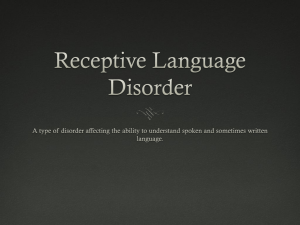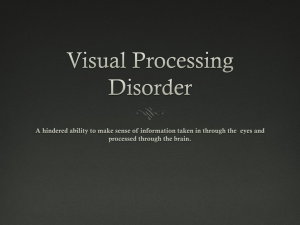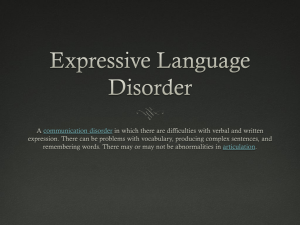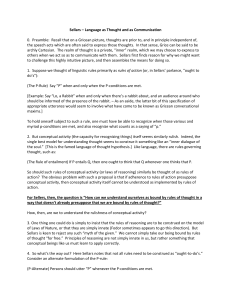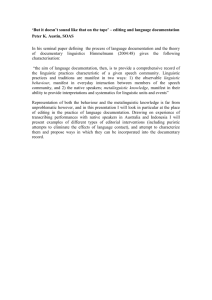Notes on Philosophy and the Scientific Image of Man.doc
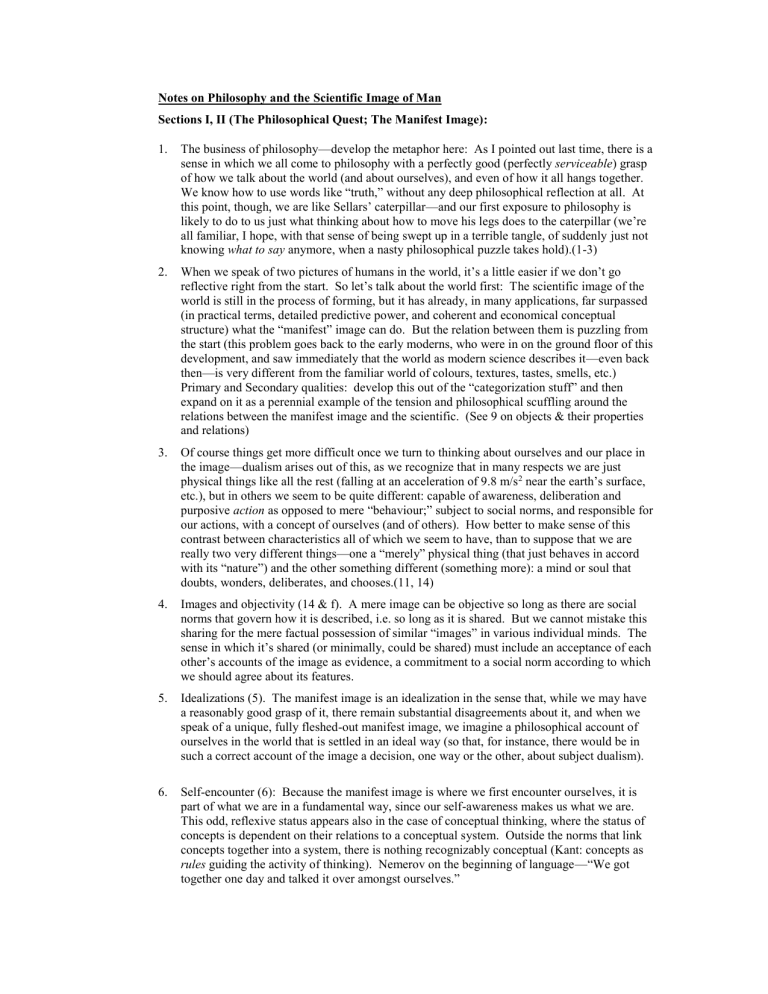
Notes on Philosophy and the Scientific Image of Man
Sections I, II (The Philosophical Quest; The Manifest Image):
1.
The business of philosophy—develop the metaphor here: As I pointed out last time, there is a sense in which we all come to philosophy with a perfectly good (perfectly serviceable ) grasp of how we talk about the world (and about ourselves), and even of how it all hangs together.
We know how to use words like “truth,” without any deep philosophical reflection at all. At this point, though, we are like Sellars’ caterpillar—and our first exposure to philosophy is likely to do to us just what thinking about how to move his legs does to the caterpillar (we’re all familiar, I hope, with that sense of being swept up in a terrible tangle, of suddenly just not knowing what to say anymore, when a nasty philosophical puzzle takes hold).(1-3)
2.
When we speak of two pictures of humans in the world, it’s a little easier if we don’t go reflective right from the start. So let’s talk about the world first: The scientific image of the world is still in the process of forming, but it has already, in many applications, far surpassed
(in practical terms, detailed predictive power, and coherent and economical conceptual structure) what the “manifest” image can do. But the relation between them is puzzling from the start (this problem goes back to the early moderns, who were in on the ground floor of this development, and saw immediately that the world as modern science describes it—even back then—is very different from the familiar world of colours, textures, tastes, smells, etc.)
Primary and Secondary qualities: develop this out of the “categorization stuff” and then expand on it as a perennial example of the tension and philosophical scuffling around the relations between the manifest image and the scientific. (See 9 on objects & their properties and relations)
3.
Of course things get more difficult once we turn to thinking about ourselves and our place in the image—dualism arises out of this, as we recognize that in many respects we are just physical things like all the rest (falling at an acceleration of 9.8 m/s 2 near the earth’s surface, etc.), but in others we seem to be quite different: capable of awareness, deliberation and purposive action as opposed to mere “behaviour;” subject to social norms, and responsible for our actions, with a concept of ourselves (and of others). How better to make sense of this contrast between characteristics all of which we seem to have, than to suppose that we are really two very different things—one a “merely” physical thing (that just behaves in accord with its “nature”) and the other something different (something more): a mind or soul that doubts, wonders, deliberates, and chooses.(11, 14)
4.
Images and objectivity (14 & f). A mere image can be objective so long as there are social norms that govern how it is described, i.e. so long as it is shared. But we cannot mistake this sharing for the mere factual possession of similar “images” in various individual minds. The sense in which it’s shared (or minimally, could be shared) must include an acceptance of each other’s accounts of the image as evidence, a commitment to a social norm according to which we should agree about its features.
5.
Idealizations (5). The manifest image is an idealization in the sense that, while we may have a reasonably good grasp of it, there remain substantial disagreements about it, and when we speak of a unique, fully fleshed-out manifest image, we imagine a philosophical account of ourselves in the world that is settled in an ideal way (so that, for instance, there would be in such a correct account of the image a decision, one way or the other, about subject dualism).
6.
Self-encounter (6): Because the manifest image is where we first encounter ourselves, it is part of what we are in a fundamental way, since our self-awareness makes us what we are.
This odd, reflexive status appears also in the case of conceptual thinking, where the status of concepts is dependent on their relations to a conceptual system. Outside the norms that link concepts together into a system, there is nothing recognizably conceptual (Kant: concepts as rules guiding the activity of thinking). Nemerov on the beginning of language—“We got together one day and talked it over amongst ourselves.”
7.
Cause and Character: We use the word “reason” ambiguously. On one hand, reasons are part of the picture of choice, of deliberate action: when I act for reasons, in this sense, the fully fledged notion of a person (and not some truncated remnant of it) is at work. But we also say, the height of the flagpole (given the elevation of the sun) is the reason why the shadow is x meters long. Here there is no question of choice, and truncation is definitely being applied.
There is no “choice” (save in extravagant metaphor) here, on the shadow’s part.
8.
(6-7) The main point here is that the manifest image is fundamentally distinguished from the scientific not by whether it’s sophisticated or even scientific in the sense of being a product of deliberate investigation, but by whether or not postulated entities are invoked by the image.
(8-9) Here Sellars identifies the manifest image as the subject/focus/pole of a certain kind of philosophical investigation—one that dedicates itself to explicating the manifest image, and takes that image for reality itself. This is what Sellars calls the “perennial philosophy”.
Sellars’ talk of a stereoscopic view implies that this approach to philosophy gets things wrong—but it also points up a serious problem for such a view, since Sellars also says we are essentially the being “which conceives of itself in terms of the image which the perennial philosophy refines and endorses.
” The aim Sellars adopts here is of somehow fusing the two images, without allowing either to dominate.
9.
Persons as the primary category: the idea seems to be that a person is the richest sort of object in the manifest image’s classification of things—a person is subject to all the basic properties and relations that apply to things in the manifest image. The original image is a kind of origin myth, but with a serious point. We can get, by truncation and similarly conservative maneuvers, all the categories of the manifest image out of the category of person.
10.
(11 f) Sellars spends a fair bit of time here without really explaining what he’s up to with this stuff. Natures, characters, habits… what’s this all about? I think he’s developing some fundamental points about the relations between actions that are expressions of character and actions that, while predictable, have nothing to do with character, between habits and deliberate actions, and the links between these ideas and our ideas of causation and nature.
What’s in character here is what can be predicted (and only predicted) in a certain way, namely by evidence of what this person “has done in the past” (12) One’s nature is more inclusive, since it covers all that’s predictable, whether that prediction depends on information about that person’s past actions or not.
11.
One upshot here (aside from the truncation theory of the origin of other categories in the manifest image) is a caution about causation—causes involve “interventions” of a kind, that lead someone or something to do what they otherwise would not have done. In the metaphorical application of causes to non-persons/truncated persons, we preserve this by regarding a change in path following a collision as “caused,” while continuing in the same path (though predictable) is not something that needs a cause .
Sections III, IV (Classical Philosophy and the Manifest Image; the Scientific Image):
12.
Retaining the conceptual as a part of the manifest image—crude associationism (think, among the early moderns, of the empiricists) in psychology tries to cut the Gordian knot here. The impact of nature on the individual can’t account for the development of conceptual thought in the individual (though this was a standard view—Plato, Aristotle). Hegel recognizes the essential role of the group here; we need real norms here, and these cannot be in principle restricted to a single individual.
13.
The manifest image hits a limit here: it can recognize, but it cannot account for, the role of the world and the group together in producing, within an individual, the capacity for conceptual thought. Here we need to draw on the scientific image, and evolution (of a social species) in order to get a handle on how this works. (Note how Sellars is pointing to the scientific image here to resolve the puzzle that he earlier said was the last stand of special creationism.)
14.
So we have, in the manifest image, a dual notion of causation (18): The simple (mere) causal impact of the world on the nature of the individual, and the social/normative impact that
produces, in a developing human individual, the capacity for conceptual thought (and which is essential in turn for “causation” in a very different sense—acting in character, and more generally acting deliberately, doing things for reasons).
15.
This duality of causation is reflected in the ambiguous use we make of this kind of talk today.
We use “reasons” to refer both to causes, in the “predictable from something’s nature” sense, and to refer to reasons proper, the kind that play a role in deliberation and acting in character.
It is fairly common, when being careful about the differences between these, to reserve the words “cause” for the first and “reason” for the second. But their common origin in the original image (and their subsequent differentiation in the course of the “truncation” of specifically person-linked features of many objects) should be kept in mind here.
16.
What remains of this picture of ourselves once it’s properly integrated into the scientific image? For Sellars, this can’t be separated from asking, what remains of ourselves?
17.
Sellars makes a more refined stab at characterizing the two images (p 19): a) the correlational and categorical refinement of the original image; b) the image derived from the fruits of postulational theory construction.
18.
He also articulates a view of how the many different scientific images are related—the physical to the biochemical to the physiological to the behavioural… Sellars distinguishes between an ontological reduction (that the entities of biochemistry just are complex groups of physical entities, for example), a full reduction of one science to the other (re-making biochemistry into physics) (he rejects this reduction as impossible, since each connects its theoretical vocabulary to the world in independent and very distinct ways and contexts), and the reduction of the laws/principles of one to the laws/principles of the other (here the key question is, is there a simple way to get the laws and principles of biochemistry out of the laws/principles of physics). This may be the case sometimes, but it needn’t follow from a successful ontological reduction, and in fact it’s pretty unusual—combinatorics ensures things tend to get pretty complicated, and the range of contexts/conditions where the principles of biochemistry apply is restricted (compared to the range where the principles of physics apply).
19.
Behaviouristics is a special case. Sellars distinguishes common-sense behaviourism, which simply treats behaviour as the evidence for psychological claims (here of course we also include what people say about their psychological states—the reasons we have for doing so will come up later in the course), from a more fundamental behaviourism, which attempts to replace ordinary psychological language with constructs defined in behavioural terms.
20.
In the case of animals, we have both experience and evolutionary thinking to thank for considerable guidance on what sorts of stimuli and circumstances should play an important role in our search for correlations between conditions and the behaviour of these organisms.
21.
The conditions in which earthworm behaviouristics will work successfully, i.e. really give some predictive power for what earthworms do, must resemble (in ways that will need exploration) the conditions under which earthworms normally exist and behave.
(Biochemistry will do a lot to predict what happens to earthworms at high temperatures, for example, but earthworm behaviouristics will not!) Other sciences come in, when we try to define these limits.
22.
Iffy properties are related to counterfactuals (If I were to put this piece of meat on the floor, my dog would eat it), and to postulations (the reason for this fact is that, as a dog with a good appetite, she will reliably eat whatever I offer her in normal circumstances, and this in turn is because the neuro-physiology of dogs has been tuned by evolution to …). But the postulations we make about humans (and, but in a much looser and sloppier way, about higher animals as well) are guided by a very special class of postulations—postulations about the presence, in the brains of the organisms, of states which are analogous to overt verbal behaviour, and which in fact are often and naturally expressed by such behaviour. (24)
23.
But these postulations are not neatly tied into neurophysiology—they are an inheritance from a much earlier stage of human thought. So their role in our thinking about the scientific and manifest images is a bit dicey—on the one hand, they are postulations (so they should belong to the scientific image—but they don’t fit so easily with the ontological reductions we’ve already considered vis a vis other sciences) but on the other, they are very much a part of the manifest image, as it has appeared in philosophical discussion.
24.
Behavioural correlations of the kind behaviouistics studies depend on circumstances, and where we get outside such circumstances, other sciences must be brought in to account for what’s going on. This points towards a telescoping of behaviouristics within neurophysiology within physiology, biochemistry and physics in turn, despite the challenges this poses. So in the end, the scientific image of man turns out (ontologically) to be as a complex system of physical objects.
Section V (the clash of the images):
25.
Three views of the relation between the images: (26) a.
Identity theory: items in the manifest image are to be identified with suitably corresponding items in the scientific image. b.
Manifest privilege: The scientific image is a conceptual/intellectual convenience, helping us to refine and extend the manifest image; the manifest is real, and the scientific is a “tool” for helping us to represent it. c.
Scientific realism: Manifest objects are “appearances” to human minds of a reality that is (in the end) best/correctly described in the terms provided by the scientific image.
26.
For a system to have properties none of its parts do, these properties must be facts about the properties and relations of their parts. (A ladder is not made of ladders, but being a ladder is just for its parts (rungs, etc.) to have the properties and relations that they do.) EVERY
PROPERTY OF A SYSTEM OF OBJECTS CONSISTS IN THE PROPERTIES OF, AND
RELATIONS BETWEEN, ITS CONSTITUENTS.(27)
27.
A pink ice cube fails this test: It is pink through and through. Its pinkness does not appear, in the manifest image, as a property that it has by virtue of the properties and relations of uncoloured parts. There is no room in the scientific image for properties like “pinkness” even when we allow properties of systems of objects built up in this way.
28.
This gives us an argument for c (Sellars’ 3) above. The manifest ice cube must be a mere appearance, since its pinkness is not a property of/relation between, the constituents of the scientific ice cube.
29.
A little two step: Moore’s common sense objection to this view: It’s obvious from observation that ice cubes are coloured through and through, so you surely can’t seriously propose that we should reject this obvious fact. Sellars’ response is to distinguish a challenge within a framework (in the manifest image framework there is no question about this) from a challenge to a framework (which is what the scientific realist is aiming at).
30.
The practical usefulness of the manifest image also fails as a defense of its truth (but it imposes a constraint on a satisfactory scientific image: it must account for the usefulness of the manifest image by correlating its image with the manifest image in certain ways).
31.
Similarly, defenses against puzzles like Zeno’s paradoxes that appeal to the retail level usefulness of concepts like space and time are unsuccessful. Retail usefulness is compatible with whole sale falsehood. Ordinary use need not fail just because a paradox or contradiction lurks somewhere in the system.
32.
Sellars argues that there’s a problem with moving sensible properties like colour out of objects (in the scientific image) and then going on to eliminate them from humans as well, when we think of them as complex systems of uncoloured physical objects—as he puts it, it seems incoherent, after this, that objects could even appear to be coloured.
33.
Conceptual thinking (despite D’s position on this) is not really a problem—Sellars thinks suitable neurophysiological states could be (in fact, are) suitably similar to these states of mind, so that we can just replace conceptual states (modeled analogically on overt language use) with these neurophysiological states.
34.
But the difficulties with perceptual states (the experience of colours, smells, etc.), their introspectability (which cannot just be a matter of how conceptual thoughts appear to us, since instropective awarenesses themselves are thoughts), and the introspectability of conceptual states, suggest that IF we can’t figure out how perceptual states can be satisfactorily “imaged” in the scientific image, we shouldn’t settle for this picture of conceptual thinking either. This would push us back in the direction of option b (Sellars’ 2) above (predominance of the manifest/ no real stereoscopic image).
Sections VI, VII (the primacy of the scientific image and putting man into the SI):
1.
Having posed an argument that suggests we must retreat to the manifest image, and declare the scientific image a kind of tool or instrument used to extend our grasp of the manifest image, not a truly independent, competing framework, Sellars comes back to reconsider the relation between our grasp of our thoughts and our grasp of sensation. Both, as he sees it, are cases of noninferential knowledge. That is, we don’t have to infer claims about these things from other sentences (evidence) we accept in order to know them. But they are very different, nevertheless.
2.
Sellars proposes that thoughts are modeled, by analogy, on the sentences we use to report them.
The idea is that thoughts are related both to each other and to occasions and circumstances in the world in ways that parallel the relations between corresponding sentences and the same occasions in the world. This means that our understanding of thoughts does not require them to have any particular properties (or kinds of properties) at all, so long as they participate in the right relations between occasions and each other to properly parallel the relations that apply to sentences. Here the metaphor of computer programs (which can run on very different systems by very different physical operations and still be the same) and a parallel with chess (which can be played on very different boards with very different pieces so long as certain structures relating the “boards”, the
“pieces” and the “moves” are preserved) come in.
3.
Sensations are similar to thoughts in the sense that the characteristics we describe them in terms of
(being a sensation of white, or of something triangular, or of the smell of a rose) are grounded in an analogy. But the analogy in the case of sensations is between the properties we attribute to the sensations and the properties (the sensible properties) we attribute to objects in the manifest image. By contrast, the analogy we use to ground the ways in which we describe thoughts (a thought that it is cold outside, or the thought of a big lottery win) is between the relations between different thoughts (and circumstances in the world) and the relations between different and corresponding linguistic items (and circumstances in the world). The items related (and the particular properties they have) are not specified at all; anything that participates in the right sort of structure of relations will do. But in the case of sensations, the idea is that the properties these things have are (somehow) like the sensible properties of things in the manifest image.
4.
But for properties to be alike is for them to share characteristics, i.e. to share second order properties. All we mean by that hefty phrase is properties of properties : for example, red is a property that shares with other colours the property of being a sensible characteristic of visible objects in the manifest image. Red also shares with other colours the second-order property
Sellars calls “ultimate homogeneity”. This is the property of holding uniformly of every point in a continuous region—that is, every sub-region of the region is also coloured (and if the region is uniformly coloured, every sub-region is of exactly the same colour).
5.
What bothers Sellars about the property of being a “red” sensation (i.e. a sensation of red, i.e. the sort of sensation typically caused in normal (human) subjects when presented with a red object in standard visual conditions) is that it inherits this character he calls ultimate homogeneity. A sensation of red presents us with an ultimately homogenous, red “region” of visual space. But this means that, whatever property it is that makes a sensation “red” it cannot be a property of some
discrete collection of neurons, or molecules, or even sub-atomic particles, since (in the scientific image) none of these is a continuous region that can be uniformly anything .
6.
Now, while we can, easily enough, accept that red things only look (to perceivers like us) to have an ultimately homogeneous colour, and in fact are complex systems of particles that have no colour whatsoever, it is much harder to say that red sensations only look (to perceivers like us) to have an ultimately homogeneous character that is analogous to colour (i.e. resembles and differs from other related properties in ways that parallel the patterns of resemblance and difference of colours of objects in the manifest image). After all, it is these sensations themselves that we invoke to explain how uncoloured objects manage to look coloured to us: These qualities of sensations, by their analogy with the properties of manifest objects, explain how manifest objects appear to have properties (like colour, taste, smell, i.e. secondary qualities) that the corresponding real things (in the scientific image) simply don’t have at all, by serving as intermediates between our awareness (and the operation of our systems of concepts on that awareness) and the objects in our environment that our senses are responding to. If the sensations themselves don’t have such analogous qualities after all, it seems impossible to understand how things could even appear to be as they are in the manifest image. (Recall here Sellars’ remarks about colours being “mere appearance” in a far more radical sense than the familiar primary/secondary quality distinction requires, in the sense, that is, that there is nothing like colours anywhere in the world at all.)
7.
So it seems we’re really stuck. If the physical world is best taken to be the world as science (in its ideal form) describes it, and that world includes nothing that is coloured (since the objects in the public world that we observe are not coloured) and nothing that could even correspond to the appearance , for us, of a world of colours (and smells and etc.), since no property even structurally analogous (possessing the same second-order properties) to these occurs in the “real world”, then it seems we’ll have to supplement the physical with another aspect of the world that does (the
“mental”). This other aspect will interact with the physical world, or at least some parts of it within us—after all, if it doesn’t interact, it’s explanatorily impotent even with regard to what we say , and so can do no work for us at all. But we’re back to some sort of substantial dualism.
8.
Sellars offers an escape, but it’s by means of a promissory note: As science develops, he suggests, it may emerge that while much of what goes on in the natural world can be captured within a discrete, particulate account of what there is and how it interacts, certain continuous regions of space-time, within some organisms’ central nervous systems, are occupied by continuous fields whose presence and character affect the organism’s “particles” in certain ways, and typically result when certain stimuli impinge on the “sensory surfaces” of the organism. Then the scientific image itself would contain structures with characteristics analogous enough to colours (and other secondary properties) to explain why the world appears, to us, to contain coloured objects, and there would be no need, for descriptive and explanatory purposes (these are inseparable, for
Sellars) for us to appeal to anything beyond the world of the scientific image.
